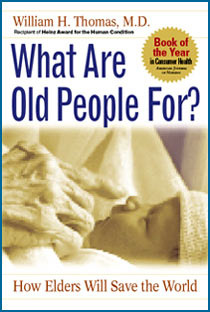![]()
Search
Recent Posts
- ChangingAging.org Redesign -- Please Bookmark!
- Disaster in Buffalo
- Power Up Friday
- Blanchard WinsDays
- Kevin Frick writes...
- Monkhouse Monday
- Getting Closer!
- Blanchard WinsDays
- Power Up Friday
- My Pick for Health and Human Services
- Understanding Health Care Reform
- Facts Are Stubborn Things: Social Security Edition
- Monkhouse Monday
- Localism is Coming
- Krugman Can't Wait...
Recent Comments
- Sheila Mack on
Monkhouse Mondays: Prevention instead of cure
Category Archives
- AGING 100
- Aging
- Culture
- Dementia
- Eden Alternative
- Erickson School
- Green House
- Health Policy
- Longevity
- Media
- Rockets
Monthly Archives
- February 2009
- January 2009
- December 2008
- November 2008
- October 2008
- September 2008
- August 2008
- July 2008
- June 2008
- May 2008
- April 2008
- March 2008
- February 2008
- January 2008
- December 2007
- November 2007
- October 2007
- September 2007
- August 2007
 Subscribe to this blog's feed
Subscribe to this blog's feed
Announcements

Blog Data
« Movie Stars Are Immune from Aging | Main | Hannah and Haleigh »
September 29, 2008 |Permalink |Comments (1)
Monkhouse Mondays: Prevention instead of cure
In Switzerland, like elsewhere in Europe, health insurance pays for some preventative measures in young people, some even contribute to a fitness-center enrollment and weight loss programs. Insurance does not, however, pay for systematic preventative visits to older people at home to assess their small health deficiencies in order to prevent bigger ones which accumulate over time.
Our system thus spends a lot of money on few people (who have to move to a nursing home because of a health-crisis, such as falls).
How long will it take until we spend a little money on many people? To prevent falls, we could be checking their eyesight, bone density and balance and inform them how to make their home safe and fit for their increasing frailty.
The medical model, after all, is a reactive one, and it seems, outmoded and expensive too! It could be replaced by a "chronic care model“ (Watch this video to get some ideas how it could work)
Christa Monkhouse
Comments ( 1)
In the U.S. many seniors rely on the Medicare program as their sole source of health insurance. Though Medicare was established to address acute and to some extent chronic medical issues,many are now trying to reinvent it so that coverage includes preventive and wellness services. This ideally will result in positive outcomes for seniors while saving money in a budget busting system.
As the responsible party for an 88 year old aunt, I believe the silo approach to chronic care management remains the biggest dis-service to seniors relying on the Medicare system (as well as those with private insurance). Impossible to manage quality and costs when services are so disjointed.















![[TypeKey Profile Page]](http://www.umbc.edu/blogs/changingaging/nav-commenters.gif)